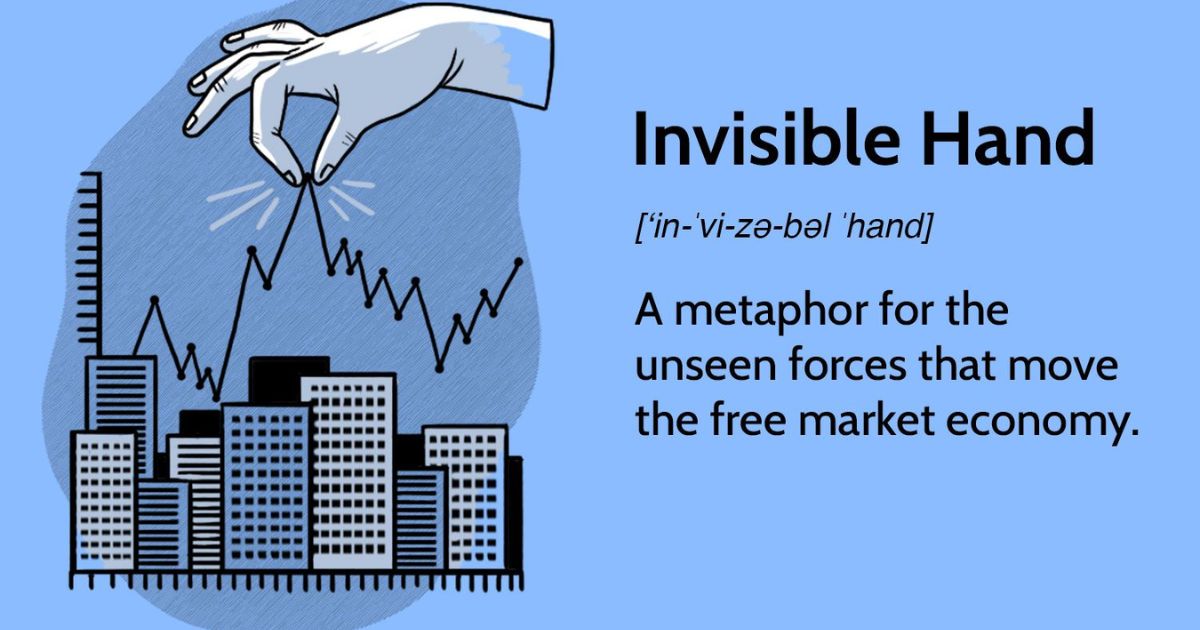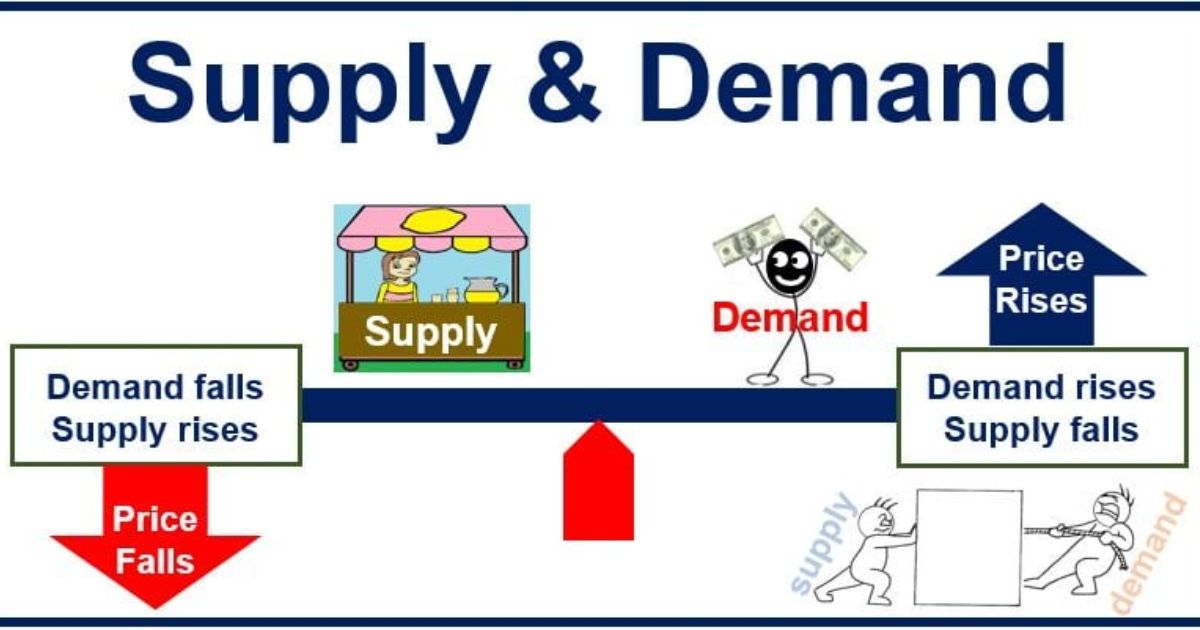In the realm of economic theory, the invisible hand of the market place exerts an influential force that shapes the allocation of resources, determines prices, and fosters competition. This enigmatic concept, popularized by Adam Smith, encapsulates the idea that individual self-interest, when left to freely interact in a market setting, can lead to collective benefit and optimal resource allocation. Exploring the intricacies and impacts of this invisible hand can provide valuable insights into the functioning of our daily lives and the broader economy.
Key Takeaways
- The invisible hand of the market place refers to the role of supply and demand in determining production levels, pricing, and product quality based on consumer preferences.
- Market equilibrium, established through competition, ensures efficient allocation of resources and optimal utilization in a free market, benefiting consumers through lower prices, a wide range of choices, and access to innovative products.
- Efficient allocation of resources and competition driven by market equilibrium lead to increased productivity, reduced waste, and improved quality.
- Government intervention in the market can disrupt the benefits of market equilibrium and hinder efficient resource allocation.
The Role of Supply and Demand
The role of supply and demand is an essential aspect of market dynamics, influencing the allocation of goods and services in an economy. Producers play a crucial role in the supply side of the equation, as they are responsible for manufacturing and offering goods and services to the market.
Their decisions regarding production levels, pricing, and product quality are driven by their understanding of consumer preferences. On the other hand, consumer preferences have a direct impact on demand. The choices made by consumers, influenced by factors such as price, quality, and brand reputation, determine the quantity of goods and services they are willing and able to purchase.
The interplay between producers and consumers in the market creates a delicate balance of supply and demand, shaping the overall functioning of the economy. Consequently, understanding the role of producers and the impact of consumer preferences is crucial for comprehending market dynamics and price determination in the market.
Price Determination in the Market
Price determination in the market is influenced by the interplay between supply and demand and is ultimately determined by the equilibrium point where the quantity of goods or services demanded equals the quantity supplied. When demand exceeds supply, prices tend to rise, signaling to producers that they can increase their production to meet the higher demand.
Conversely, when supply exceeds demand, prices tend to fall, indicating to producers that they should reduce production. This mechanism ensures that prices adjust to balance supply and demand in the market.
However, in a market economy, price determination in the market is not solely governed by supply and demand. Government intervention can also play a role in influencing prices. For example, governments may impose price controls to prevent excessive price increases or to ensure affordability for consumers.
This intervention can distort the market’s ability to reach equilibrium and may result in unintended consequences such as shortages or surpluses.
Price elasticity, another important factor in price determination, measures the responsiveness of demand to changes in price. When demand is elastic, a small change in price leads to a proportionally larger change in quantity demanded.
Conversely, when demand is inelastic, a change in price has a relatively smaller impact on quantity demanded. Understanding price elasticity helps businesses and policymakers make informed decisions about pricing strategies and market interventions.
Efficient Allocation of Resources
Facilitating the optimal utilization of resources, efficient allocation ensures that scarce resources are allocated to their most valued uses in the market. This process plays a crucial role in promoting economic growth and improving overall welfare. Here are some key points to consider:
- Benefits of efficient allocation:
- Increased productivity and output: When resources are allocated to their most valued uses, productivity levels rise, leading to higher output levels.
- Reduced waste: Efficient allocation minimizes waste by ensuring that resources are not used in less valuable or unproductive ways.
- Inequality consequences:
- While efficient allocation can enhance overall welfare, it may also exacerbate income and wealth inequality. Market forces might reward certain individuals or groups disproportionately, leading to uneven distribution of resources and opportunities.
- Market failures:
- Market failures, such as externalities, information asymmetry, and monopolies, can hinder efficient resource allocation. These failures necessitate government interventions to ensure fair and optimal allocation.
Efficient allocation of resources is vital for a well-functioning market economy, but it is essential to address and mitigate its potential inequality consequences and market failures.
Competition and Market Efficiency
Competition in the marketplace brings several benefits, such as increased innovation, lower prices, and improved quality of goods and services. These benefits contribute to economic efficiency by incentivizing firms to seek ways to produce and deliver products more efficiently. Moreover, competition helps establish market equilibrium by balancing supply and demand, ensuring that resources are allocated optimally.
Benefits of Competition
In today’s global economy, the presence of competition in the market plays a crucial role in promoting efficiency and driving innovation. Competition creates a dynamic environment where businesses are constantly striving to improve their products and services to stay ahead of their rivals. This leads to increased consumer choice as companies compete to offer better quality, lower prices, and more innovative solutions. The benefits of competition can be summarized as follows:
- Market dynamics:
- Competition encourages market players to constantly adapt and respond to changing consumer preferences and demands.
- It creates an environment where businesses are incentivized to invest in research and development, leading to technological advancements and product improvements.
- Consumer choice:
- Competition provides consumers with a wider range of options to choose from, ensuring that they can find products and services that best meet their needs and preferences.
- It also promotes price competition, driving down prices and increasing affordability for consumers.
Economic Efficiency Impact
As competition fosters market efficiency and promotes innovation, it has a significant impact on the economic efficiency of a market. Economic efficiency refers to the optimal allocation of resources to maximize societal welfare. When markets are competitive, firms are motivated to produce goods and services efficiently, leading to lower costs and prices.
This benefits consumers by increasing their purchasing power and access to a wider range of products. Moreover, competition drives firms to innovate and improve their products, which can lead to higher economic growth. However, it is important to note that competition alone may not always result in economic efficiency.
Market failures, such as monopolies or externalities, can hinder competition and lead to inefficient outcomes. Therefore, policies that promote competition and address market failures are crucial for achieving and maintaining economic efficiency.
Market Equilibrium Effects
Frequently, market equilibrium brings about competition and enhances market efficiency, resulting in optimal resource allocation and improved economic welfare. This occurs through various mechanisms:
- Competition:
- Market equilibrium encourages competition among firms, leading to lower prices and increased innovation.
- Competitive forces drive firms to improve their products and services, benefiting consumers with better choices and quality.
- Market Efficiency:
- Market equilibrium ensures that supply and demand are balanced, preventing market distortions.
- Efficient markets allocate resources effectively, matching buyers and sellers at the right price.
- When markets are efficient, wasteful activities are minimized, and economic output is maximized.
However, market distortions and disequilibrium can disrupt the benefits of market equilibrium. Government interventions, monopolies, or external shocks can create imbalances and hinder the efficient allocation of resources. Therefore, maintaining market equilibrium is crucial for achieving optimal economic outcomes.
Market Equilibrium and the Invisible Hand
Achieving market equilibrium, the invisible hand of the market facilitates the allocation of resources and ensures efficient outcomes. It operates on the principle that when individuals pursue their self-interests in a competitive market, they inadvertently promote the greater good of society as a whole.
By allowing supply and demand to interact freely, the invisible hand guides the market towards equilibrium, where the quantity demanded equals the quantity supplied at a given price. This balance ensures that resources are allocated efficiently, maximizing overall welfare. To further understand the concept of market equilibrium, consider the following table:
| Market | Equilibrium Price | Equilibrium Quantity |
|---|---|---|
| A | $10 | 100 |
| B | $20 | 200 |
| C | $30 | 300 |
| D | $40 | 400 |
As market conditions change, the invisible hand adjusts prices and quantities to maintain equilibrium. This self-regulation minimizes the need for market intervention and mitigates the risk of market failure. Understanding the role of the invisible hand in achieving market equilibrium is crucial to comprehending its impacts on daily life and the economy as a whole.
Impacts on Daily Life and the Economy
One significant impact of the invisible hand of the market place on daily life and the economy is the efficient allocation of resources. This concept suggests that in a free market, resources are allocated based on supply and demand, leading to optimal utilization. The invisible hand ensures that goods and services are produced in quantities that meet consumer needs, thus impacting consumers positively.
Impacts on consumers:
- Lower prices: The invisible hand promotes competition, driving businesses to offer better prices to attract customers.
- Variety of choices: Market dynamics allow for a diverse range of products and services, giving consumers the freedom to choose according to their preferences and needs.
Market dynamics:
- Innovation: The invisible hand encourages innovation as businesses strive to create better products or services to gain a competitive edge.
- Efficient production: The invisible hand incentivizes businesses to produce efficiently, reducing waste and maximizing output.
Conclusion
In conclusion, the invisible hand of the marketplace plays a vital role in the efficient allocation of resources and determination of prices. Through the forces of supply and demand, competition, and market equilibrium, it ensures that resources are utilized optimally and benefits consumers and producers alike.
Its impact on daily life and the economy is significant, making it an essential concept to understand in the world of economics. So, next time you witness the invisible hand at work, remember its crucial role in shaping our market-driven society.











